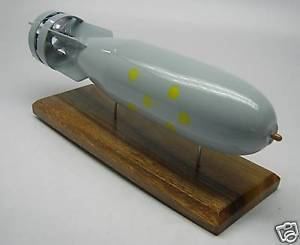Number of tests 1 Device type Fission | Period August 1953 Test type Atmospheric Test | |
 | ||
Test site Semipalatinsk Test Site, Kazakh SSR | ||
RDS-4 (also known as Tatyana) was a Soviet nuclear bomb that was first tested at Semipalatinsk Test Site, on August 23, 1953. The device weighed approximately 1200 kg (2646 lb). The bomb was dropped from an IL-28 aircraft at an altitude of 11 km and exploded at 600 m, with a yield of 28 kt.
The Soviet Union's first mass-produced tactical nuclear weapon was based on the RDS-4 and remained in service until 1966. It used a plutonium implosion assembly and had a nominal yield of 30 kilotons. The bomb was delivered from a Tu-4 and Tu-16 aircraft. A tactical weapon based on the RDS-4 was also used on September 14, 1954 during Snowball military exercise near Totskoye (similar to Western Desert Rock exercises), when the bomb was dropped by the Tu-4 bomber (the copy of American B-29 bomber). The purpose of this exercise was not to test the bomb itself, but the ability of using it while breaking through enemy defenses (presumably in West Germany). After the explosion Soviet jet fighters were sent to fly through the mushroom cloud while tanks and infantry were forced to move through ground zero. Medical records of contaminated soldiers were forged afterwards and many were forced out of active duty.
